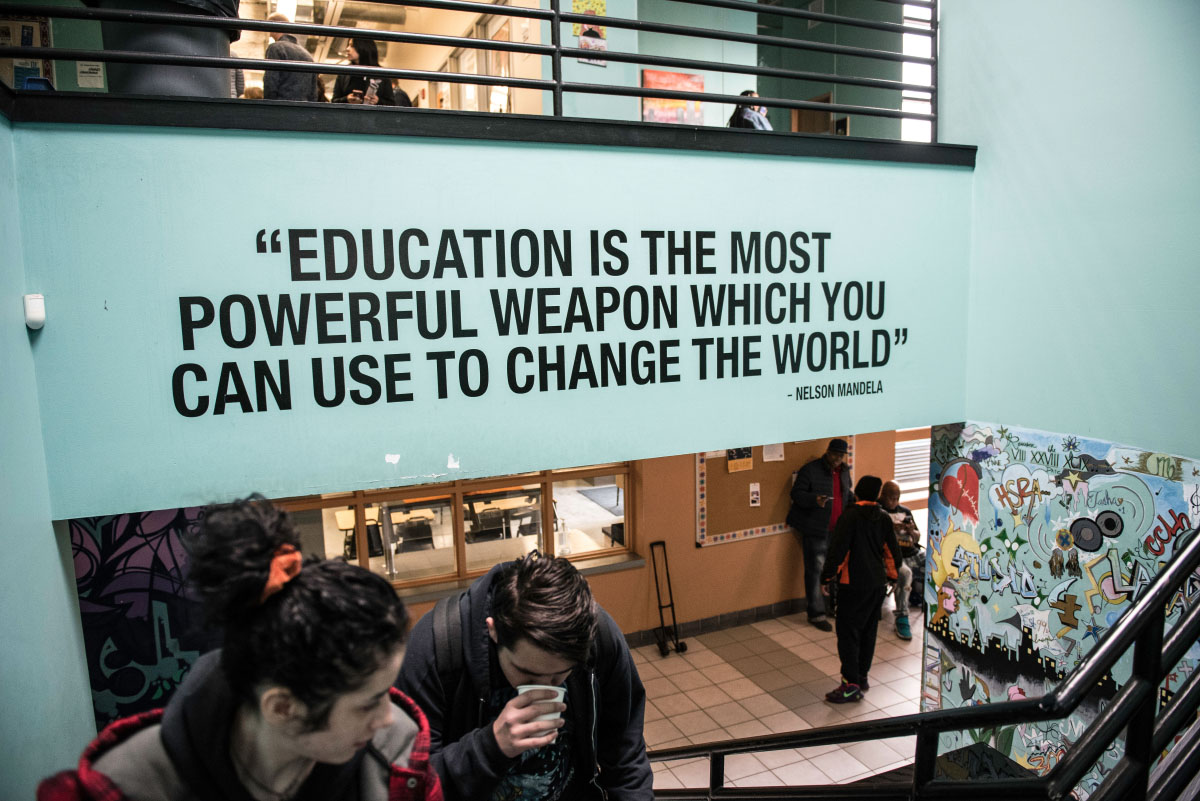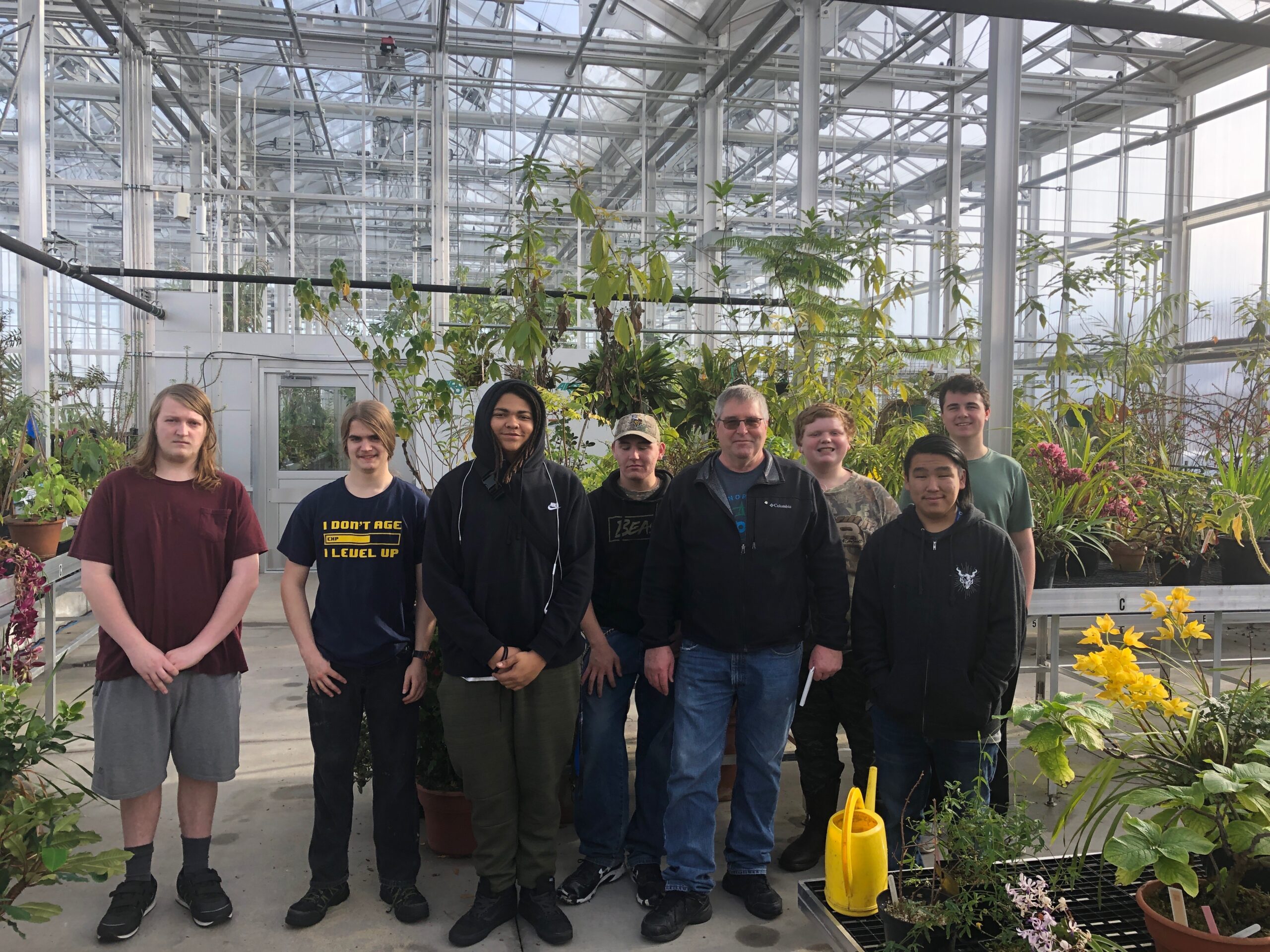Students across Minnesota are taking a non-traditional path to graduation. Instead of moving lockstep through time-based lessons and grade levels, their learning experiences are focused on outcomes. They progress at the pace at which they demonstrate mastering knowledge and skills. This path—customized to the unique interests, assets, and needs of each student—builds students’ self confidence and propels them forward on their own momentum.
It’s an approach to learning known as competency-based education (CBE), and it forms the foundation of schools like Northwest Passage High School in Coon Rapids and High School for Recording Arts (HSRA) in Saint Paul. This legislative session, Education Evolving is advocating for a bill—which was heard in the Senate today—that would explicitly authorize CBE in Minnesota. To help provide context for that bill, we spoke to both schools to learn how their models support students for whom traditional approaches have failed.
What is a ‘competency’?
Competencies are clear and measurable learning outcomes mapped to academic standards set forth by the state. More than discrete knowledge and skills (like standards), competencies are higher level characteristics of successful learners developed by students, teacher-advisors, families, and schools together.
Competencies align to one or more content areas like social studies, math, or language arts, and usually include or “cover” within them one or more state standards. Examples might include: “understand how democratic values and principles are applied by the United States government”; “apply mathematical thinking to analyze problems and design solutions in my school and everyday life”; or “write arguments to support claims using valid reasoning and evidence from text while considering the audience.”
Competencies are conceptually similar to what are sometimes called “power standards” (used by many districts in MN), “anchor standards” (in MN’s ELA standards), or “strands” (in MN’s science standards). The defining characteristic is that mastering competencies requires students to apply deep strategic and extended thinking.
Competency-based education is the identification, attainment, and demonstration of such competencies. Students help determine how they attain competencies—setting goals establishing their own pathway for success.
What a competency-based environment looks like
Many students at Northwest Passage or HSRA have been pushed out of traditional schools. At HSRA, it’s normal for a new student to have already been to up to five different high schools.
“Young people come in disempowered, [thinking] ‘school is something that happens to me,’” tells Joey Cienian, Director of Educational Programming at HSRA. “We want students to develop the skills and knowledge they need to be successful—we all do—but we don’t create structures that achieve that.”
When a student arrives under-credited, these schools rely on more than standard assessments to see the full picture of where that student is in their learning.
“We take a step back and build a relationship with that student. We figure out their story before we figure out their plan,” explains Cienian. From there, the school’s dynamic structure creates space for students to join at a place appropriate for them, without sending them back to the start.
Once onboarded to these competency-based environments, students understand what they’re learning and why, and have a plan for how they will get where they want to be.
“Students have full access to [their] learning targets. As they develop projects they have ownership over what it looks like, they have accountability,” says Northwest Passage director Peter Wieczorek. A new student of only 4-5 months, he explains, knows the number of credits they need and what learning targets they need to meet.
Both schools take seriously the relevance and transferability of competencies to life and career goals. “They’re motivated because they can see the reason they’re moving down the pathway,” says Cienian.
“The first part of our mission is rekindling our hope,” tells Wieczorek about Northwest Passage, highlighting a powerful characteristic of competency-based education. When students have ownership and agency in their learning, their self confidence grows and their potential is realized. “We’re about letting students see what they’re capable of.”
No such thing as a typical day
Competency-based classrooms at both schools don’t look like traditional classrooms. In fact, they don’t always exist.
At Northwest Passage, there are dedicated blocks of time focused on reading and math, but how that time is used looks different from student to student. Outside of those blocks, the variation of learning is exponential—and completely personalized.
Students can join content-specific seminars throughout the day, like a math lab or research writing seminar. This is the closest option to a traditional classroom. But seminars might meet only once or twice a week, maybe for only six weeks out of a term. More like a college course.
Other time is spent working independently, in small groups, one-on-one with content specialists, or perhaps in online collaboration with students from a partner school. Twice monthly students meet in cohort groups, spending one day in the field and the other designing projects informed by field study.
Supporting students’ independence through advisory
Much time at Northwest Passage is spent in “advisory”, multi-age groups of no more than 16 students who keep the same advisor through grades 9-12. This arrangement is a comfortable space for students, the advisor serving at once as teacher, mentor, and guidance counselor.
“We want students to be strong, independent learners themselves,” says Wieczorek.
HSRA has a similar setup, though its advisories are age-based. 14 and 15 year-olds are together in a cohort to build peer relationships for collaboration, support, and momentum because research shows students this age are more likely to drop out if they fall behind.
Students over 15 can choose to spend their whole day in programming or none at all. Programming consists of core content workshops, pop-up classes, or competency pathways: blended learning that incorporates learning management software, interactive notebooks, labs, and appointments with teachers.
HSRA employs more advisors than licensed teachers, with about 25 students per advisor and wraparound services to meet student needs before onboarding students to a learning pathway.
“I can’t predict if student A is going to be ready next week, but if he is, we’ve got to be ready for him,” says Cienian. This dynamic structure is not for everyone, Joey admits, but he says that shouldn’t scare other schools off either. They can and should adopt elements that work for their students.
EE advocacy on this issue
Education Evolving is advocating for competency-based education bills right now before the Minnesota House and Senate (HF2190/SF485). Schools want to do right by their students. This legislation will provide state leadership, support, and encouragement to schools implementing CBE, and help those schools trust that doing so is not coloring outside the lines but rather is putting their students at the center.


